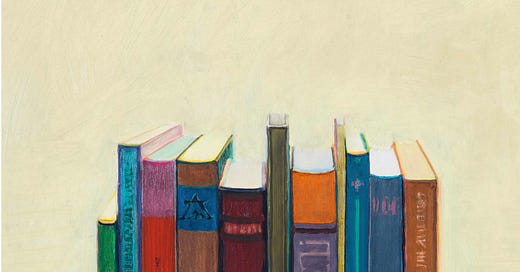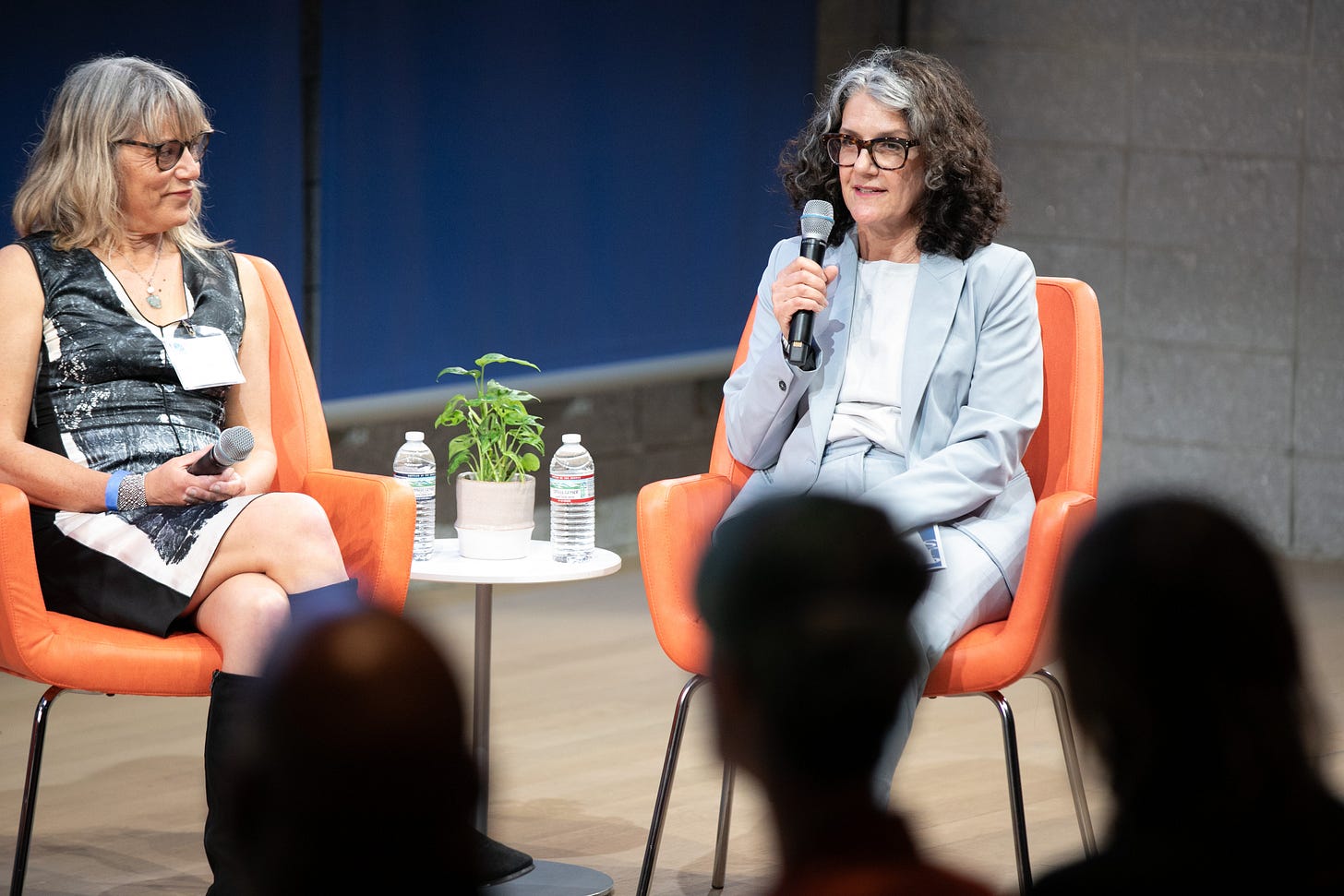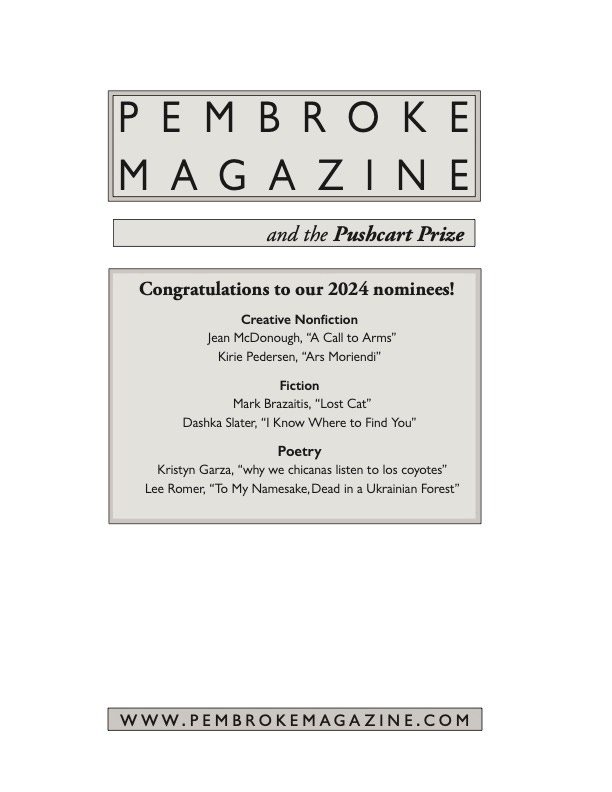A couple of decades ago, I heard Wayne Thiebaud, the California painter, give a lecture at the Community of Writers, informally known as the Squaw Valley Writer’s Conference. I have no idea what he said. Despite being an obsessive journal-keeper and note-taker, I somehow have no notes, no journal entry, and only the haziest memory of the whole event. What I retained from the experience, aside from an abiding affection for both the artist and the art, was a sense of permission, which is maybe the most important thing.
Permission is how I categorize any conversation about creativity or craft that leaves me feeling both bold and curious, that resurrects the feeling of playfulness that gets lost when you start worrying about whether your work is “good” or “marketable” or “relevant” or “innovative” or any of the other paralyzing labels the world has to offer. Permission is when an artist shares something about how they work that feels like an invitation to muck about in the process, whatever it is, and not worry too much about the outcome.
I once attended a lecture in which Michael Ondaatje confessed that he wrote hundreds of pages (or so I remember him saying—it could have been fewer) before he arrived at what turned out to be the first page of The English Patient. I took that as permission to let my own process be as disorderly and inefficient as it needs to be. But often permission isn’t found in any particular nugget as much as it is in the way an artist talks about their process. Permission says, “Here’s what I did! You should do something too, and however you do it is probably fine because this entire thing is messy and mysterious and we’re all basically just fingerpainting, and isn’t fingerpainting fun?”
Recently, I went to San Francisco’s Legion of Honor to see “Wayne Thiebaud: Art Comes from Art,” an exhibit focused on the way Thiebaud borrowed from other artists and other paintings in hundreds of different ways. He called himself “an obsessive thief” and would sometimes make a copy of a painting he liked as a way of moving through moments of stuckness in his own work. He saw the entire history of art, from the earliest cave paintings to the present moment, as one endless, non-linear conversation that any artist could join at any time. He said:
I think we have a misconception about where painting comes from. It’s not a hermetic activity. It doesn’t come from an individual. It’s a communal, commemorative, very layered activity that comes from groups of people.
The exhibit is beautifully curated, showing which artists and paintings Thiebaud borrowed elements from — a Modigliani composition here, a Diebenkorn perspective there—and how his curiosity and appreciation allowed him to make something new out of everything he borrowed. As I moved from room to room, I felt again the sense of permission I retained from that long-ago lecture. So much of the conversation around creativity centers around originality and ownership—who invented which new thing and can therefore be considered “important.” But in reality, most creative people learn by imitating. I certainly did.
My first stories were all imitations of books I liked to read. As a child, that gave my writing a distinct English accent, since I mostly read English authors. Today I am usually able to retain my own voice, but the magpie impulse remains. When a piece of art moves me, I want both to gobble it up and to take it apart and see how it was made. Maybe it’s the way a song makes me feel or what a painting made me think about. If it’s a piece of writing, it could be a character, a setting, or something the author did with time or point of view. It’s like eating something delicious and trying to figure out how to cook it yourself. What made it so good? Was it the combination of spices? The pairing of two ingredients? A contrast of textures? How can I apply that to what I’m making for dinner tonight?
It turns out that this borrowing process is literally hard-wired into our brains. A fascinating article in Scientific American contends that the locus of imagination is the hippocampus, which is also the place that memory resides. The two work together. “[W]ithout memory,” the article says, “imagination is not possible.”
Fantasy is created by combining bits and pieces of experience with emotions, inner commentary and things people have read or heard about, says Donna Rose Addis, a cognitive neuroscientist at the Rotman Research Institute in Toronto and the University of Toronto
Studies of people with amnesia due to hippocampal damage have found that they are unable to imagine hypothetical futures, producing only sketchy, fragmentary scenarios. From an evolutionary point of view, memory exists mostly to help us plan for the future based on what we’ve learned from the past. Creatively, that means that we are recycling fragments of what we’ve experienced or encountered each time we set out to make something new. We borrow so that we can create. What distinguishes Thiebaud from other artists, then, might simply be his level of self-awareness, or his willingness to deliberately harness the brain’s intrinsic methods.
Like Thiebaud, I go to my bookshelf when I’m stuck, looking for how other writers solve a particular problem or simply wanting to read a well-constructed sentence. But I also go to music, art, theater, movies and TV, any place where people have made something and the thing that they’ve made feels human and interesting and compelling. In a world that’s filled with far too much that’s Not Art, everything that is art can serve as inspiration.
The writer and journalist W. H. Davenport Adams famously said, “great poets imitate and improve, whereas small ones steal and spoil.” (The maxim, in various incarnations, has since been falsely attributed to everyone from William Faulkner to Pablo Picasso.) This formulation is a little reductionist for my taste, but it’s useful for understanding the difference between the thoughtful imitation of a painter like Thiebaud and the mindless theft that characterizes generative AI. Imagination isn’t searching for a formula or a bag of tricks. It’s searching for delight, for resonance, for meaning.
One of the poets I studied with in college, Robert Pinsky, used to require his students to retype thirty poems each semester. (He also used to make us learn poems by heart.) Pinsky dispensed these assignments with an attitude of weary condescension, as if he despaired of ever making his pupils take the reading of other people’s poetry as seriously as we took the writing of our own. At first, I bridled at the task, which felt like busy work, particularly in the era of the typewriter. But once I started doing it, I understood the logic. Both memorization and retyping require you to make the poet’s choices inside your own brain and body, to note that the line breaks here, not there, to mull over the word the poet selected that defies easy logic. (You can read a short essay Pinsky wrote about that experience here.) With my undergraduate years long behind me, I can see that Pinsky was teaching us how to borrow. In his own curmudgeonly way, he was giving us permission.
There are thousands of other ways to borrow, of course. Take a random sentence from a book and make it the first line of your own poem or story. Reproduce the structure of a piece of writing but not the content. Write something inspired by a painting or a photograph or a song. Invite a character from folklore or the literary canon to visit your own story. It doesn’t matter how you do it. It only matters that you’ve allowed your work to link hands with that “communal, commemorative, very layered activity” that is the vast history of human artistic endeavor. If you need permission, consider it granted.
In Other News…
After a year’s delay, I went to New York to receive the J. Anthony Lukas Book Prize for Accountable: The True Story of a Racist Social Media Account and the Teenagers Whose Lives It Changed. It was the first Young Adult title to ever receive this prestigious journalism award, which is jointly given by the Columbia Journalism School and Harvard’s Nieman Foundation for Journalism. I was in conversation with Adrian Nicole LeBlanc, author of Random Family, Alice Driver, author of The Life and Death of the American Worker: The Immigrants Taking on America’s Largest Meatpacking Company, and Dan Xin Huang, author of Rutter: The Story of an American Underclass. You can watch our conversation, along with two fascinating others, here.
My short story, I KnowWhere To Find You, was nominated for a Pushcart Prize.
My book, The 57 Bus, was named to Kirkus’s list of the 100 Best Young Adult Books of the Century.
My other newsletter, A Sigh of Relief, has reached bestseller status on Substack. If you don’t already subscribe, you might enjoy this essay on how leaving social media changed my brain.
I bow to you,
Dashka









Huge congratulations on all of this good news, Dashka! Also “magpie impulse” really got me.
Congrats on the prize for Accountable and thanks for posting the conversation!